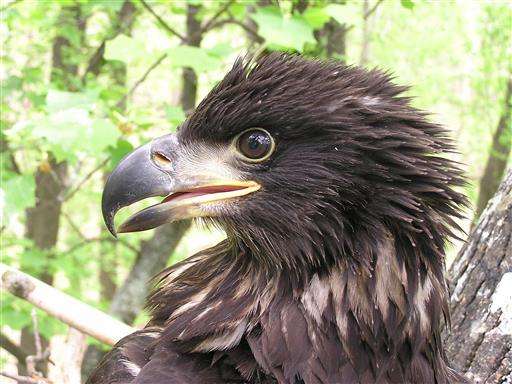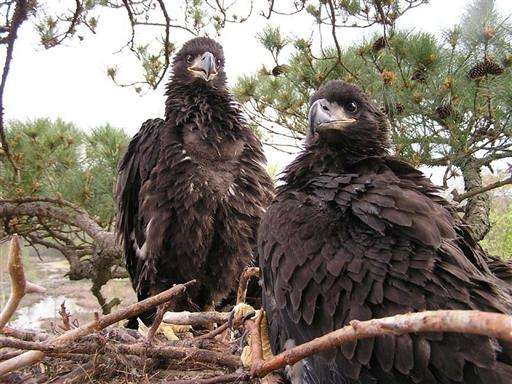Bald eagles making strong recovery in Virginia

Virginia's bald eagle population is thriving at levels not likely seen since before the United States was a country, one of the nation's top eagle experts said Friday.
A total of 1,070 occupied bald eagle nests were counted in this year's survey by the Center for Conservation Biology at the College of William and Mary. It's the first time more than 1,000 have been counted since the survey started 60 years ago.
This marks a remarkable comeback for the bird whose population had dropped to just 20 pairs in the state in 1970, said Bryan D. Watts, the center's director.
"The truth is, you have to go back to colonial times, likely, ... to see numbers like we see today," Watts told The Associated Press in an interview.
The eagle's resurgence in Virginia is part of a nationwide recovery, hailed as a great conservation success story involving habitat preservation and the banning of certain pesticides.
Once decimated by DDT and other pollutants, the national bird was one of the first species put on the Endangered Species List, in 1967. They were delisted in 2007, and there are now 10,000 nesting pairs nationwide, according to the U.S. Fish and Wildlife Service.
Mitchell Byrd is retired professor who has been doing the Virginia survey for 40 years. When he started, he wouldn't see a single nest along the James River. He's heartened to see so many bald eagles now.

"It's indicative of what we as a species can do," Byrd said, "if we set our minds to it."
This year's survey found nesting pairs in 57 Virginia counties and 12 cities, with some of the highest concentrations near the Potomac and Rappahannock rivers. Many of their offspring—too young still to have their iconic white plumage—also were spotted.
The Chesapeake Bay watershed is a prime feeding ground in both summer and winter, drawing the eagles from as far north as Canada and as far south as Florida.
Watts said their breeding space is now at a premium, so their population growth should begin slowing. An increasing number of injuries and deaths related to intra-species combat is one telltale sign of how crowded they've become.
Another is the speed at which a mate is replaced. Bald eagles typically mate for life, but when one partner dies now, Watts said "there is a string of suitors immediately that comes into that space."
© 2016 The Associated Press. All rights reserved.















